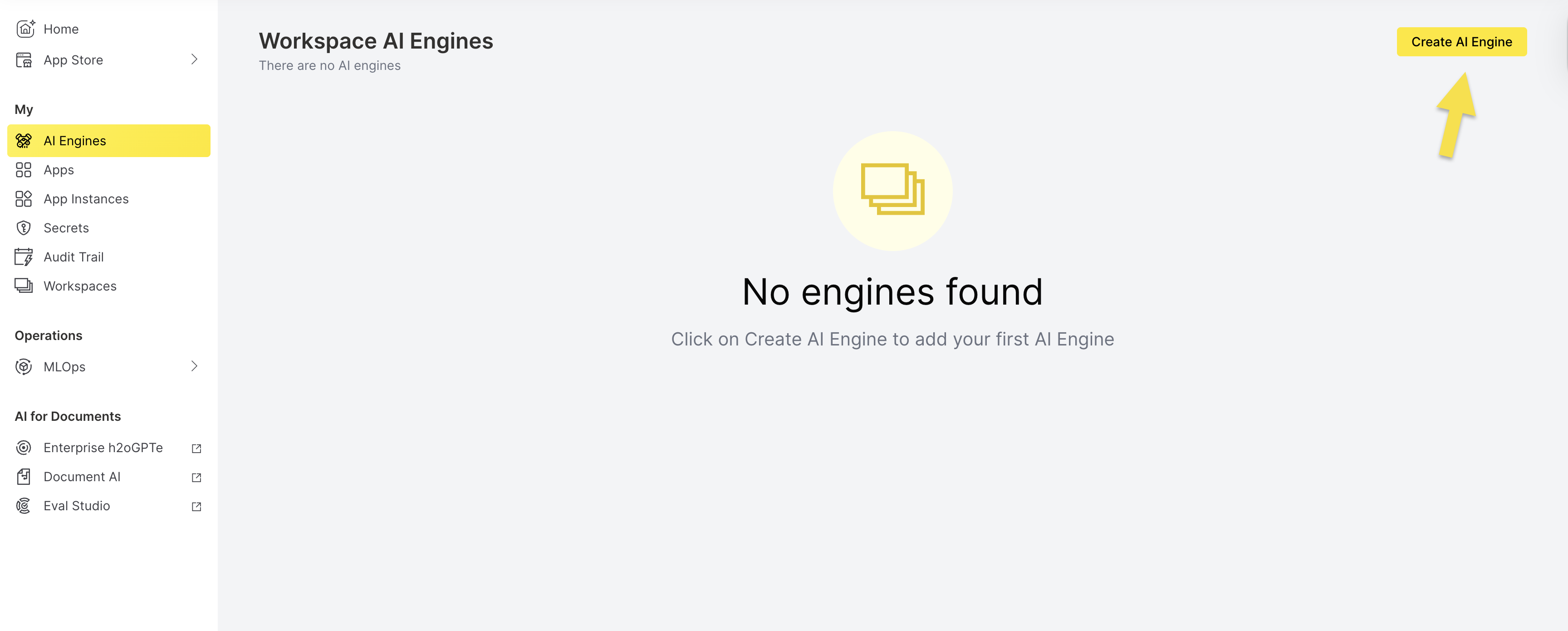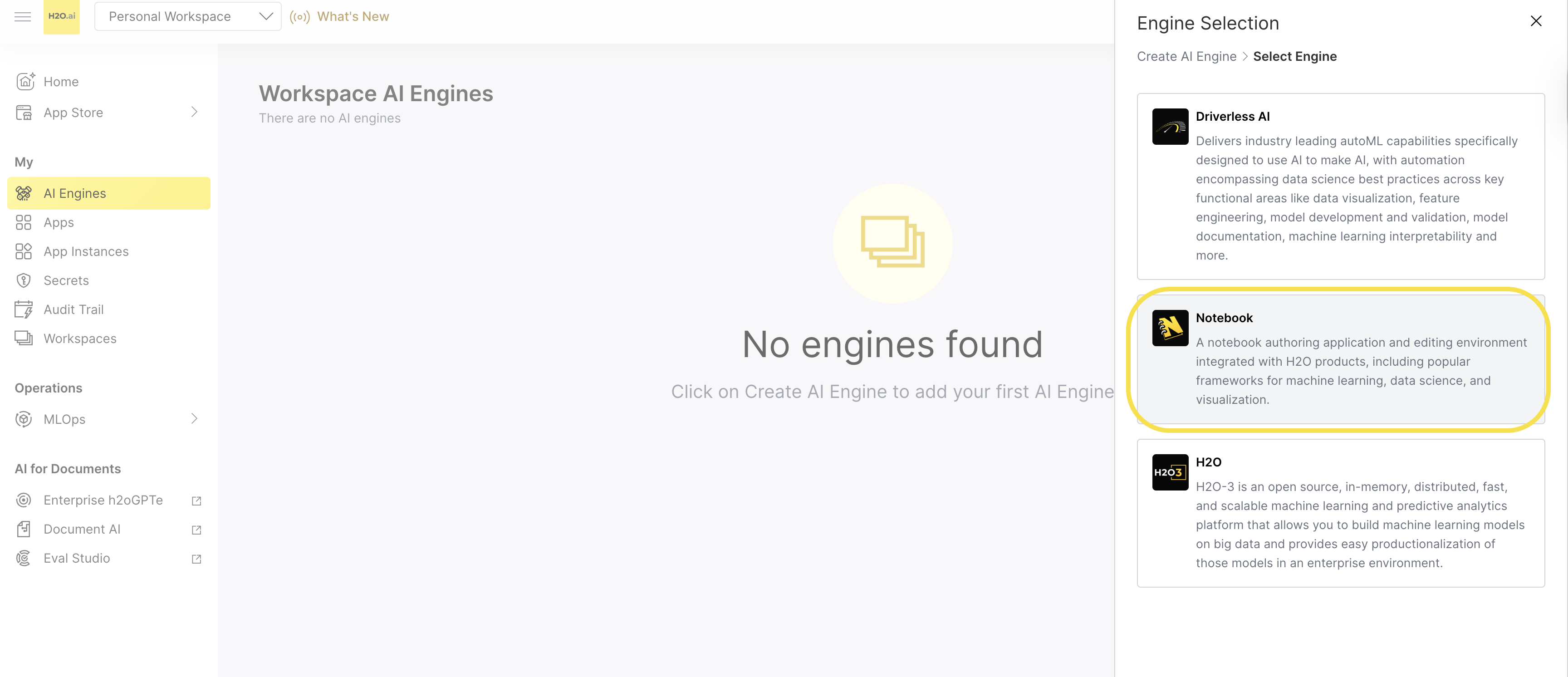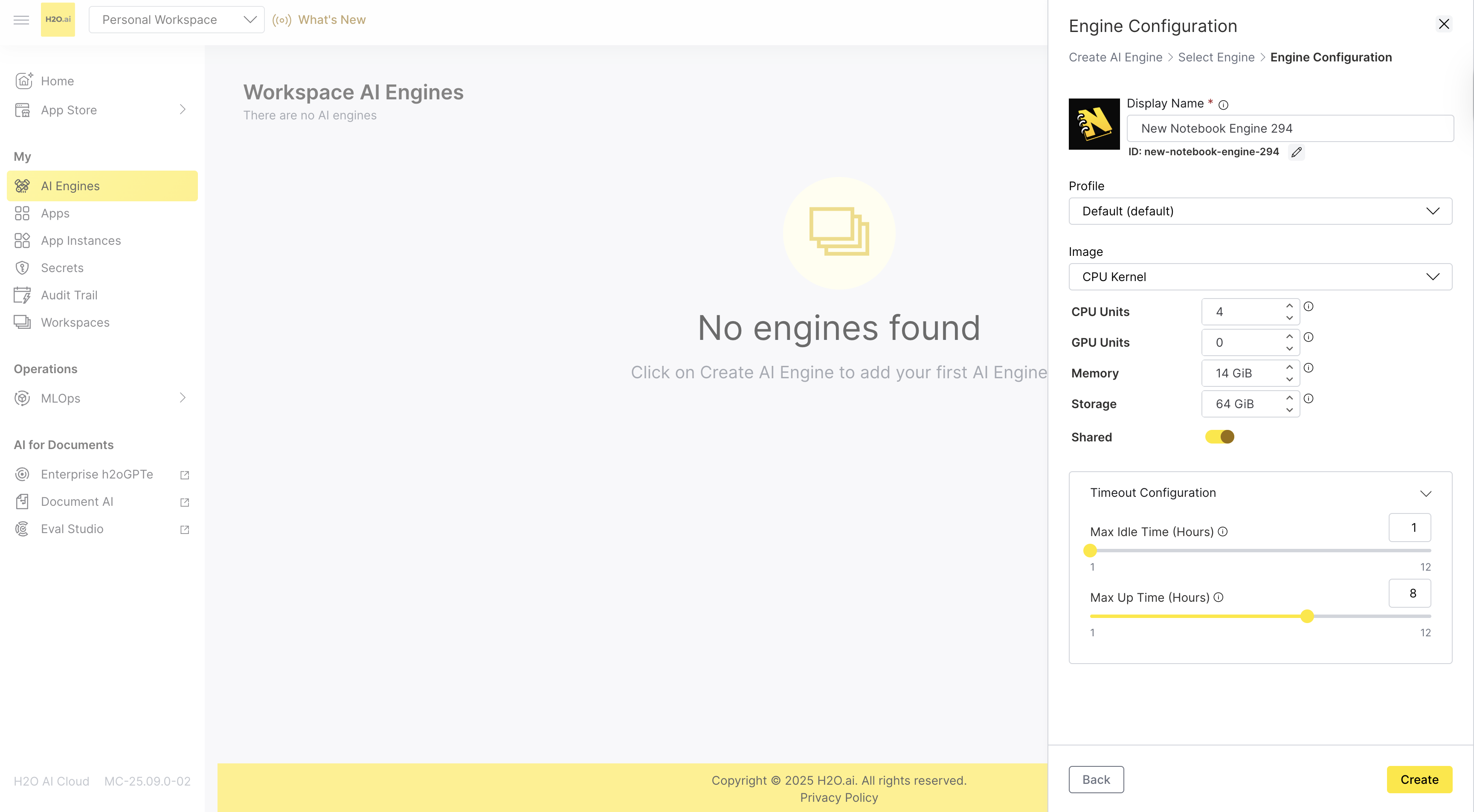Create a new Notebook Engine
This guide walks you through creating a new Notebook Engine using the H2O AI Cloud web interface.
What is a Notebook Engine?
A Notebook Engine is a notebook authoring application and editing environment integrated with H2O products, including popular frameworks for machine learning, data science, and visualization. It provides:
- Interactive notebook environment for data science workflows
- Integration with H2O machine learning frameworks
- Support for popular data science libraries and tools
- Collaborative development capabilities
- Real-time code execution and visualization
- Support for multiple programming languages (Python, R, etc.)
- Integration with H2O AI Cloud services
- Configurable resource allocation and timeout settings
Prerequisites
Before creating a Notebook Engine, ensure you have:
- Access to H2O AI Cloud web UI. See Access AI Engines for details.
- Appropriate permissions allocated to your workspace. Contact your administrator or the H2O support team for more details.
- (Optional) Resource requirements: Consider your computational needs when configuring resources for your data science workloads. You also have option to resize your notebook engines after you have created them.
Create a new Notebook Engine
To set up a Notebook Engine using the H2O AI Cloud user interface, follow these steps:
Step 1: Navigate to Create AI Engine
On the AI Engines page, click Create AI Engine.

Step 2: Select Engine Type
On the Engine Selection tab, select Notebook.

Step 3: Configure Engine Details
On the Create AI Engine > Select Engine > Engine Configuration page, provide the following information:
Display Name: Enter a descriptive name for your Notebook engine.
Engine ID: The system automatically generates a unique ID based on your display name. However, it is recommended to use a secure ID for your use case. Click the Edit (Pencil icon) icon to customize it.
Profile: Select an appropriate Profile from the dropdown. The profiles section, including the default profile, is managed by your admin. Contact your administrator or the H2O support team for more details.
Image: Choose the Image from the dropdown. The available images depend on what the administrators have set up.
Display Name:
- Can include special characters and alphanumeric characters
- Character limit: 63 characters
- Use a clear, descriptive name for easy identification
Engine ID:
- Must start with a lowercase letter
- Must end with a lowercase letter or digit
- Can contain only lowercase letters, digits, or dashes (-)
- Min length: 1 char, Max length: 63 chars
- Cannot start or end with a dash (-)

Step 4: Configure Resources
Configure the computational resources for your Notebook engine:
- CPU Units: Set the number of CPU units allocated to the engine
- GPU Units: Configure GPU units if needed for GPU-accelerated workloads
- Memory: Allocate memory in GiB for the notebook environment
- Storage: Configure storage capacity in GiB for notebooks and data
- The default values and range for CPU, GPU, Memory, and Storage are set by administrators. Contact your administrator or the H2O support team for more details.
- Notebook engines support both CPU and GPU workloads for data science and machine learning tasks.
- Consider your notebook complexity and data size when allocating resources.
- Resource allocation affects both performance and cost.
Step 5: Configure Shared Access
Set the Shared toggle to control access to your notebook engine:
- Enabled: Other users in your workspace can access and collaborate on your notebook
- Disabled: Only you can access the notebook engine
- Shared notebooks allow real-time collaboration and knowledge sharing
- You can change sharing settings later by editing the engine when paused
Step 6: Configure Timeout Settings
Expand the Timeout Configuration section to set:
- Max Idle Time (Hours): Set how long the engine can be idle before automatically pausing.
- Max Up Time (Hours): Set the maximum duration an engine can run before automatically pausing.
- For notebook engines, consider the time needed for data analysis and model development
- You can modify timeout settings later by editing the engine when paused
Step 7: Create the Engine
- Review all your configuration settings.
- Click Create to create the Notebook engine.
- The engine will be provisioned and appear in your AI Engines list.

- Submit and view feedback for this page
- Send feedback about AI Engine Manager to cloud-feedback@h2o.ai